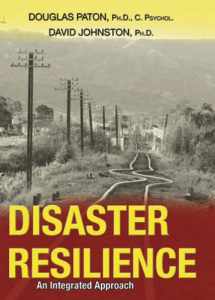
Disaster Resilience: An Integrated Approach
Book details
Summary
Description
This book will fill the gaps that hamper the effective utilization of the resilience and sustainability concepts within emergency planning: one concerns the lack of a comprehensive review of this multi-level concept; the second relates to its multi-level nature. Specifically, the text identifies a need for the systematic integration of these different levels in a manner that illustrates the holistic contribution of the resilience concept to emergency planning. By integrating these different levels in a manner that illustrates the holistic contribution of the resilience concept to emergency planning, a comprehensive working model of disaster resilience and sustainability can be developed. The text discusses the resources and strategies required at each level to facilitate resilience and how they can be integrated to develop a sustained capacity to adapt to nature (and other) hazard consequences. The nature and implications of these inter-relationships will be developed throughout the text and will lead towards the development of a comprehensive, integrated model of community resilience. A key focus of the text will thus be its articulating the inter-relationships between these levels. The importance of basing emergency planning on the holistic application of the concept will also be discussed. By representing resilience in a holistic manner, the text will also constitute a resource capable of assisting assessment of the community implications of any shortfall of resilience resources for emergency planning and for community recovery planning. The book brings together contributions from international experts in core areas. It includes chapters that provide an overarching framework within which the need for inter-relationships between levels to be developed is discussed. It also includes sections that link chapters to progressively develop a holistic multi-level model, and a chapter that describes the final comprehensive model and its implications for contemporary emergency management. It will be useful to those researching or teaching courses in emergency management, disaster management, community development, environmental planning, urban development, sociology, and applied psychology, as well as to emergency management agencies, risk management agencies, engineers and consultants, planners, emergency and law enforcement agencies, and social and welfare agencies.


We would LOVE it if you could help us and other readers by reviewing the book
Book review



